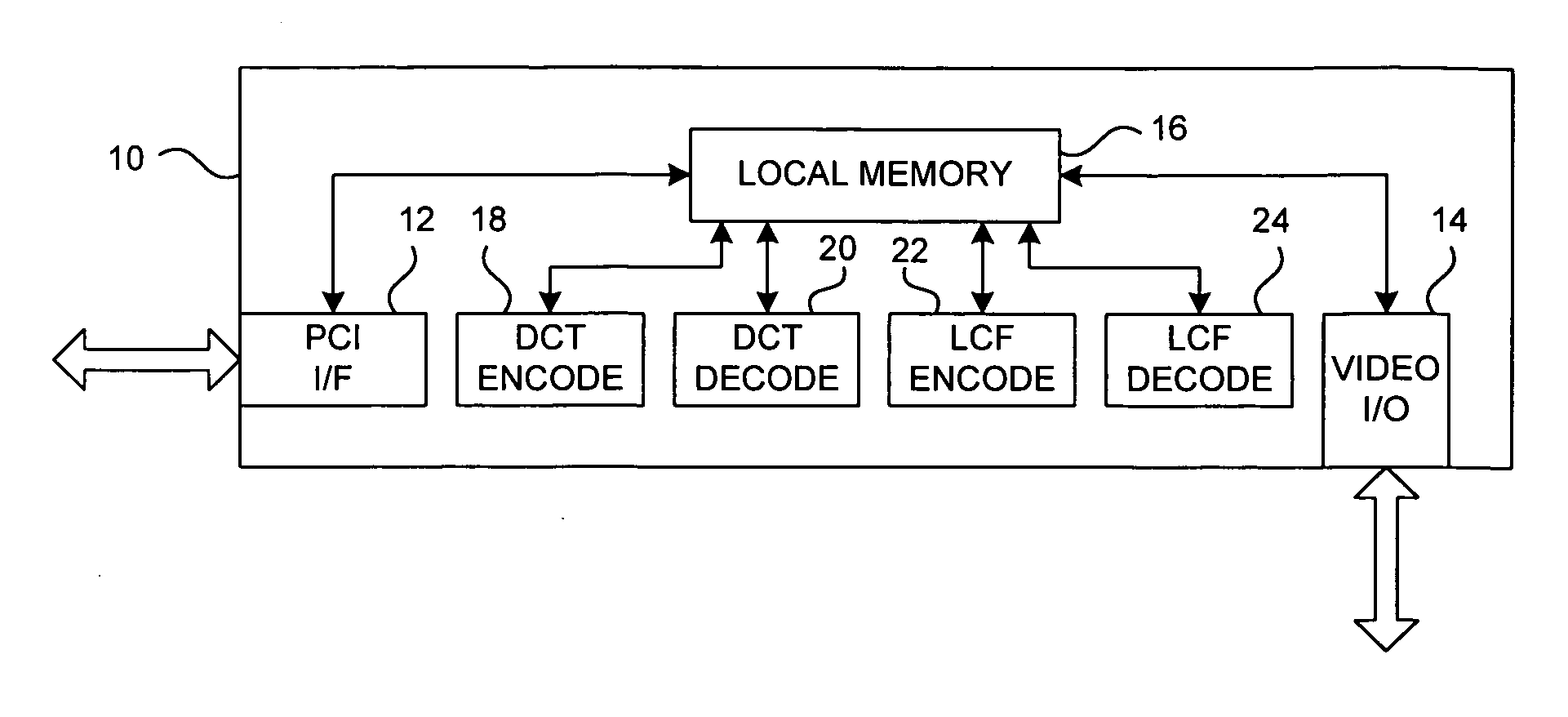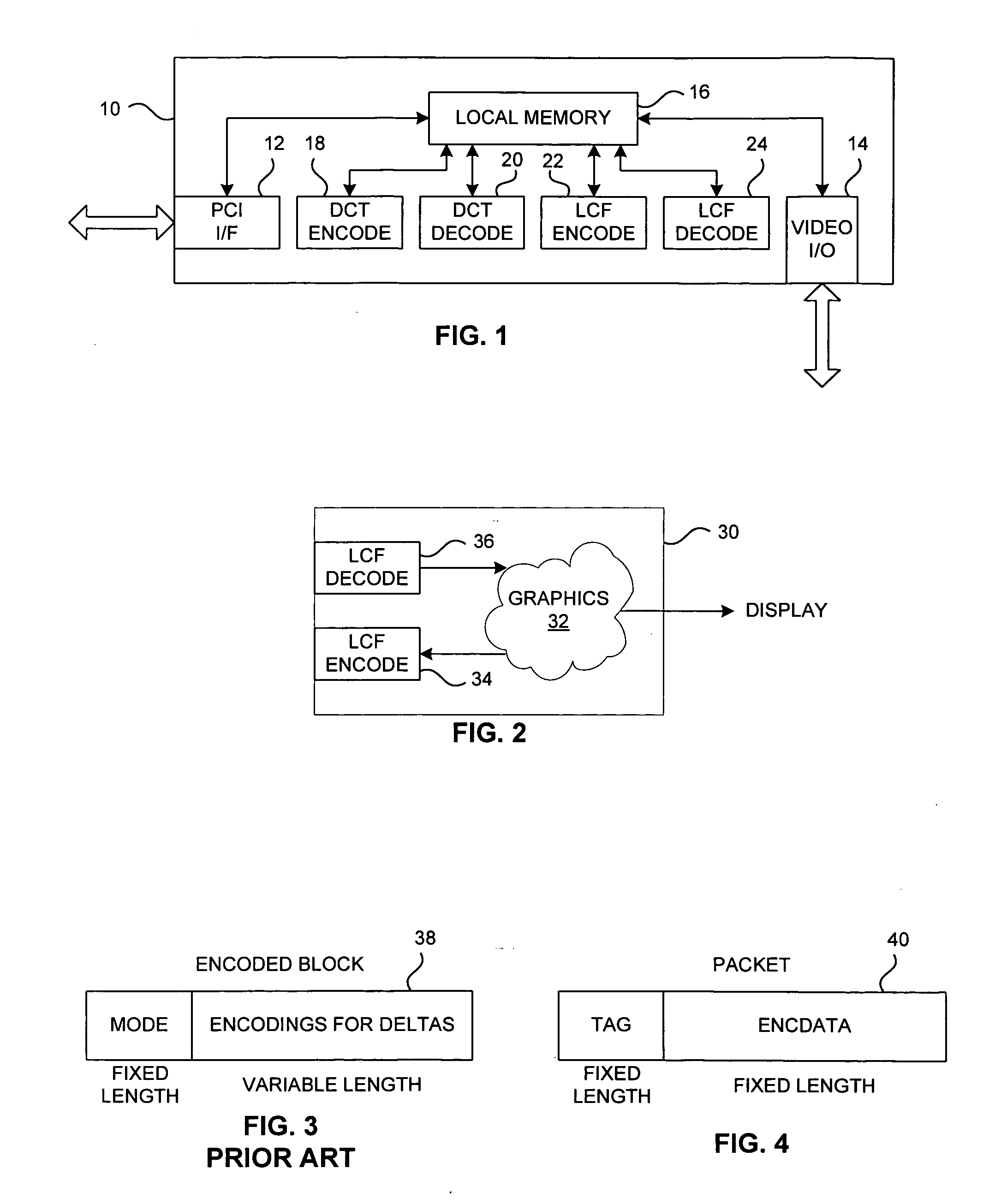System and method using a packetized encoded bitstream for parallel compression and decompression
a technology of parallel compression and encoded bitstreams, applied in the field of data compression and decompression, can solve the problems of inability to achieve hdtv resolution images at video rates, inability to use the conventional lcf architecture and application specific integrated circuits, and is not helpful in improving performance within a single bitstream, etc., to achieve convenient parallelization, efficient sending of different packets, and greater performance
- Summary
- Abstract
- Description
- Claims
- Application Information
AI Technical Summary
Benefits of technology
Problems solved by technology
Method used
Image
Examples
Embodiment Construction
[0023]FIG. 1 is a block diagram of one embodiment of a video processing 10 using lossless compression format (LCF) encoding and decoding. As shown, card 10 has a PCI bus interface 12 that can communicate across a PCI bus with a host system. Card 10 also has a video interface 14 that can communicate with a monitor or other video device. Both PCI interface 12 and video interface 14 can access local memory 16 on card 10. Local memory 16 provides storage and workspace for on-card processing. In the embodiment of FIG. 1, card 10 has two encode / decode sections coupled to access local memory 16. Card 10 has a discrete cosine transform (DCT) encode unit 18 and a DCT decode unit 20, and card 10 has an LCF encode unit 22 and an LCF decode unit 24. In operation, LCF encode unit 22 and LCF decode unit 24 can implement parallel compression using a packetized bitstream according to the present invention. Card 10 can provide high performance video processing for the host system.
[0024]FIG. 2 is a ...
PUM
 Login to View More
Login to View More Abstract
Description
Claims
Application Information
 Login to View More
Login to View More - R&D
- Intellectual Property
- Life Sciences
- Materials
- Tech Scout
- Unparalleled Data Quality
- Higher Quality Content
- 60% Fewer Hallucinations
Browse by: Latest US Patents, China's latest patents, Technical Efficacy Thesaurus, Application Domain, Technology Topic, Popular Technical Reports.
© 2025 PatSnap. All rights reserved.Legal|Privacy policy|Modern Slavery Act Transparency Statement|Sitemap|About US| Contact US: help@patsnap.com



